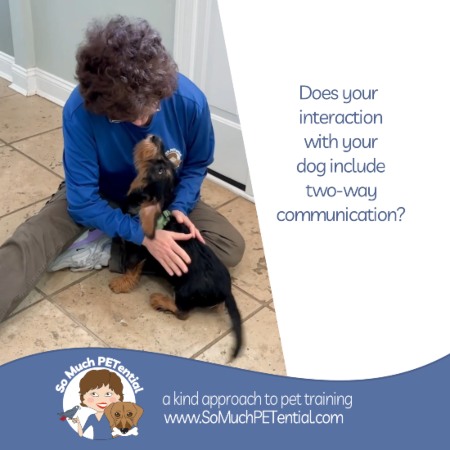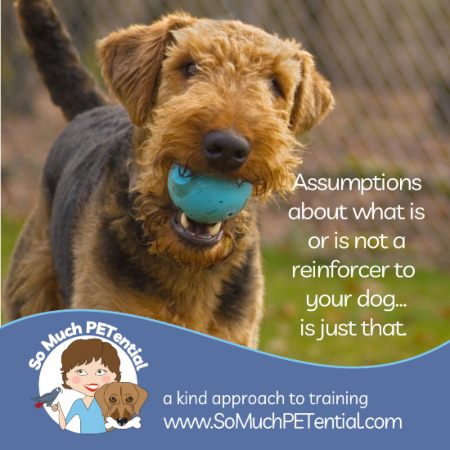I encourage you to give this some thought. Thinking you have a bad dog can cause you to use punishment to change. Instead consider that your dog’s barking and growling may be caused by distress.
 There are a number of points to think about.
There are a number of points to think about.
Firstly, that word, BAD is really just a label – a construct. Labels do not help me to understand what it is that your pet did specifically that was BAD. (You may define bad very differently than I would.)
And without knowing the observable behavior, it makes coming up with a behavior change plan in the most positive, least intrusive way very difficult.
Labels can give caregivers excuses for blaming or even getting rid of their pet, increase the use of ineffective training strategies or strategies based on punishment, give them an inaccurate understanding of the problem, and foster self-fulfilling prophecies as they tend to get the outcomes that they expect. Constructs also end the search for actual causes of the unwanted behavior.
When it comes to changing behavior and solving problems in the most positive, least intrusive ways we first need to DITCH labels.
And instead, focus on the actual observable behavior, its antecedents and its consequences.
So back to my quote (that is filled with labels), remember that how YOU label your pet’s behavior will greatly influence your choice of strategies for changing behaviors.
If your dog barks/lunges/growls at the presence of certain people or dogs, and that causes those people or dogs to move away, those behaviors are working for your dog. They are getting your dog wanted and needed distance. And therefore, your dog will likely do those behaviors in the future.
But your dog is not wanting distance without cause (from his perspective). Somewhere along the way, your dog’s life experience has taught him that the presence of dogs and/or people cause unpleasant things to happen. There are so many potential factors and reasons.
But know that, to want distance your dog is experiencing some kind of stress that he is wanting relief from.
If you start your problem-solving quest by thinking of your dog as bad, you are more likely to use aversive strategies to stop your dog’s unwanted (maybe embarrassing or annoying to you) behaviors with an aversive kind of punishment such as yelling at your dog, jerking your dog’s leash, holding your dog down, or giving your dog a shock.
While that may or may not stop your dog’s behaviors, it most certainly will not be giving your dog less stress. In fact, those methods may instead cause a heightened behavior response in your dog. Your dog may show more stress signals because your dog associates the presence of that stimulus with more bad stuff happening to him. And your dog may come to associate those negative, visceral responses with you – the one delivering the consequence.
If instead, you see your dog’s barking/lunging/growling behaviors as a sign that your dog needs help, you are more likely to seek positive strategies such as learning to recognize your dog’s stress signals and giving your dog distance before your dog needs to bark/lunge/growl. At a distance where your dog can see the stimulus and have loose muscles (a distance where your dog feels safe), you can begin teaching a different neutral or positive association instead.
There may be other contributing factors such as an underlying medical or mental health issue other contributing stress, or trigger stacking.
Working with a trainer who uses the most positive strategies can be very helpful.
My appeal to you: Instead of seeing your dog in front of you as bad, look at your dog’s specific behaviors and seek to find what need or want that behavior is helping your dog to get. Only then can you also seek to help your dog to get those needs met in a positive way.







